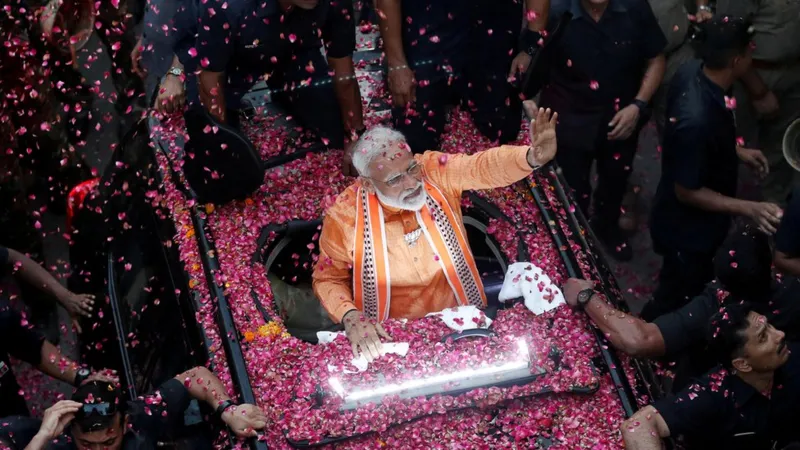Narendra Modi, India’s Prime Minister for a decade, is seeking a historic third term, aiming to continue his leadership. He’s widely regarded as one of India’s most prominent leaders in recent times.
While many voters believe there have been improvements under his administration since 2014, the question remains whether those struggling will support him in the upcoming general election.
In Varanasi, where Modi is contesting, citizens like saree weaver Shiv Johri Patel express both appreciation for Modi’s welfare initiatives and concerns about ongoing challenges, such as unemployment and bureaucratic issues.
Despite personal struggles, Patel remains steadfast in his support for Modi, emphasizing the positive changes he’s witnessed.
Modi’s popularity is undeniable, but he’s also a divisive figure, with staunch supporters hailing him as a strong and efficient leader, while critics accuse his government of undermining democratic institutions and marginalizing minority groups, particularly Muslims. Nevertheless, opinion polls suggest Modi and his party are poised for another electoral victory, although surprises are always possible.
Modi’s brand is omnipresent in India, with his image plastered across various media platforms and public spaces.
He’s known for his strategic use of branding and communication, maintaining a highly visible presence while avoiding direct scrutiny through press conferences or tough interviews.
Despite criticisms and controversies, Modi’s leadership remains largely unchallenged due to the lack of a strong opposition.
While his opponents have raised concerns about issues like economic policies and communal tensions, they’ve struggled to effectively counter Modi’s narrative and popularity.
However, challenges persist, particularly in addressing the uneven distribution of economic growth and generating quality jobs.
Modi’s relentless work ethic and focus on maintaining a strong public image have contributed to his enduring appeal among supporters.
As the election approaches, both Modi and the opposition face critical tests. While Modi aims to expand his party’s influence beyond its traditional strongholds and consolidate power nationally, the opposition seeks to overcome internal divisions and present a coherent alternative to Modi’s leadership.
In summary, Narendra Modi’s decade-long tenure as India’s Prime Minister has been marked by both widespread popularity and intense polarization.
As he vies for a historic third term, his leadership style, achievements, and controversies continue to shape India’s political landscape.
Credit : BBC
https://www.bbc.com/news/world-asia-india-69010109

